Most people now living are too young to remember the Cuban Missile Crisis. It was a fun time when the Americans and the Russians (who at that time were not good buddies but rivals), toyed with seeing just how close they could come to World War Three without pressing the (metaphorical) button. For various reasons, not least of which was that the balance of power of power greatly favoured the United States and the Soviets apparently didn’t fancy atomic suicide for some reason, the stand-off stopped short of nuclear war.
For me, living as I did in Herne Hill, well within the buildings fall, people burn like shrieking candles zone of London, England1, that was probably for the best. But that experience (wondering if I would die soon) was life-changing. I was forced to imagine the horrors of a nuclear apocalypse2 . Even though governments (which have invested trillions in possible apocalypse) would rather we just go about our business, blissfully unaware.
Writers are in the business of imagination. It should be no surprise that they have ventured into the apocalypse zone, in print and other media. Hundreds of novels have explored the exciting worlds possible before, during, and after the nuclear apocalypse.
In honour of the October Missile Crisis, here are thirteen works (one for each day of the Crisis) about worlds in which nuclear war was a reality.
Hadashi no Gen by Keiji Nakazawa (1973)
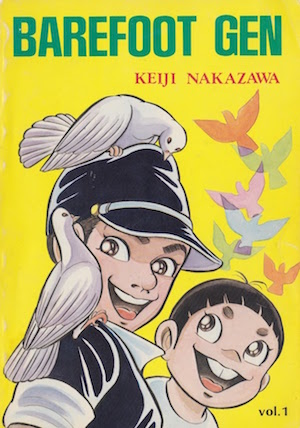
Of course, we live in a world where nuclear war was a reality, where nuclear weapons have been used in combat, at Hiroshima and Nagasaki. Keiji Nakazawa was a boy in Hiroshima on August 6, 1945. Most of his family died, trapped under their burning home; Nakazawa, his mother, and a sister survived (although his infant sister died soon after). His ten-volume manga Hadashi no Gen (Barefoot Gen) is a fictionalized account of Nakazawa’s experiences in the days after Hiroshima’s destruction.
To Western eyes, the manga is an odd marriage of an art style more often seen in light-hearted comics and a seemingly endless cavalcade of horrors. All horrors inspired by real life.
On the Beach by Nevil Shute (1957)
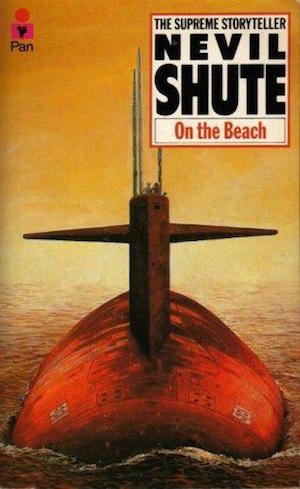
On the Beach is set in the aftermath of a spasm war that followed uncontrolled nuclear proliferation. It didn’t help that in Shute’s world, nuclear weapons were extremely cheap, well within reach of any tinpot nation. The immediate consequence was the death of every living thing in the northern hemisphere. The long-term consequence? Lethal fallout spreading inexorably south. Death is inevitable, leaving only the question of how each character will grapple with impending mortality.
Much of the worldbuilding in Shute’s novel doesn’t stand up to close scrutiny. Nuclear warheads aren’t as cheap as Yugos or as common as Fiats (which is all to the good). The author seems to be promoting a political moral—only large, powerful nations are responsible enough to be trusted with nukes—which is far from proven. Perhaps not even plausible. Still, it’s a well-written, engaging novel about human extinction.
I am not saying that just because it was assigned reading in grade school, perhaps as part of an ongoing effort to make sure that every school kid was profoundly depressed.
Alas, Babylon by Pat Frank (1959)
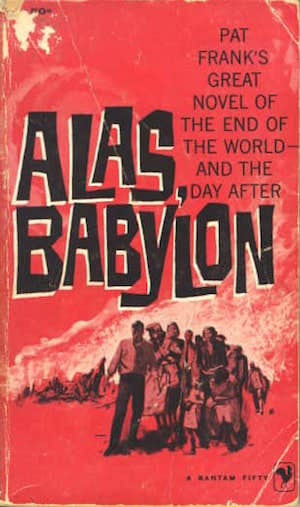
In Alas, Babylon, nuclear war leaves vast swaths of the combatant nations transformed into radioactive wastelands. Fort Repose is spared because it is too small to rate a nuke and lucky enough to avoid fallout-laden winds. The town must deal with the aftermath of war: the complete collapse of modern civilization, disease, hunger, and wandering bandits.
Alas, Babylon is a product of a very different time and place. It’s clearly trying to be progressive by the standards of the time, but it does not read well now. Gender- and racially-stereotyped characters are the least of the book’s problems.
Pat Frank explained why he wrote it:
I have an acquaintance, a retired manufacturer, a practical man, who has recently become worried about international tensions, intercontinental missiles, H-bombs, and such.
One day, knowing that I had done some writing on military subjects, he asked: “What do you think would happen if the Russkies hit us when we weren’t looking—you know, like Pearl Harbor?”
[…]
It was a big question. I gave him a horseback opinion, which proved conservative compared with some of the official forecasts published later. I said, “Oh, I think they’d kill fifty or sixty million Americans—but I think we’d win the war.”
He thought this over and said, “Wow! Fifty or sixty million dead! What a depression that would make!”
I doubt if he realized the exact nature and extent of the depression—which is why I am writing this book.
A Canticle for Leibowitz by Walter M. Miller (1959)
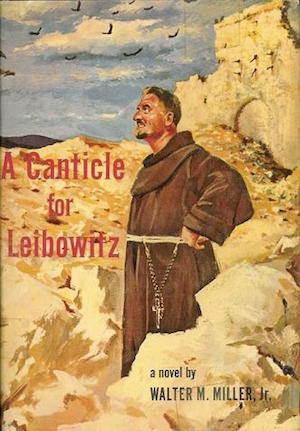
A Canticle for Leibowitz recounts the history of an abbey in a North America scoured by the Flame Deluge. It consists of three stories set (respectively) six, twelve, and eighteen centuries after the Flame Deluge. It’s a fix-up; the three stories were first published in the Magazine of Fantasy and Science Fiction. It recounts the efforts of the monks of the Abbey of Saint Leibowitz to preserve scraps of knowledge from the pre-Flame world, and then surveys the consequences of their efforts. Will this new world fall into the same nuclear trap as the old one? Our world didn’t fully grasp the consequences of nuclear war. The world of 3781 can…but will that matter?
Canticle is a striking enough work that it has given readers the impression that it was a one-shot wonder. Miller wrote other stories during the 1950s, but they have been largely forgotten, overshadowed by this grim work.
The War Game by Peter Watkins (1965)
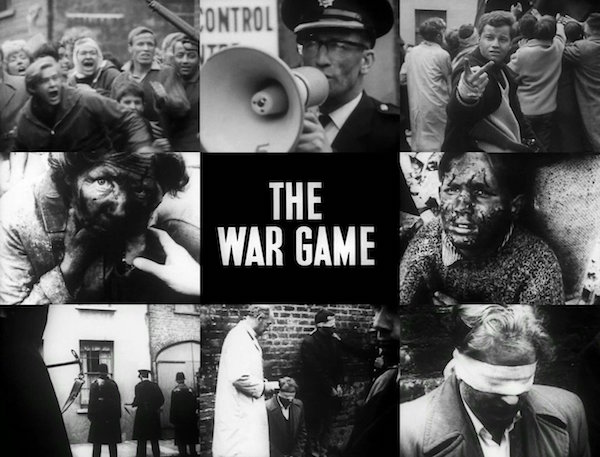
The War Game is a TV drama filmed as a documentary that presents the probable effects of a nuclear war on the United Kingdom. There is no story in the conventional sense. The book is a series of vignettes in which ill-prepared people have a very bad time indeed. Moral: a small nation like the UK is extremely vulnerable to large-scale weapons of the thermonuclear kind.
The documentary was filmed on a tiny budget (doubtless funded by coins found under the office couch cushions). The War Game was nevertheless effective enough in conveying the horror of nuclear war that the BBC declined to air it as planned. Spectacle is not required for effectiveness.
This was not the first instance in which authority figures have recoiled in horror when presented with the artifact or outcome they have clearly requested.
Still I Persist in Wondering by Edgar Pangborn (1978)
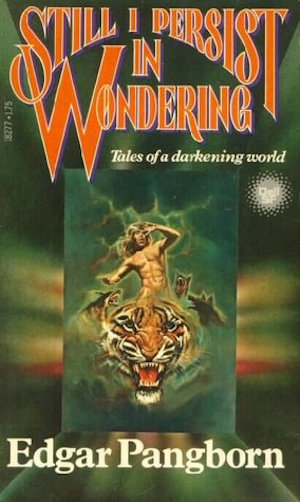
Published posthumously, Still I Persist in Wondering collects most of Pangborn’s Darkening World short pieces. The world after the Twenty Minute War and the ensuing pandemic and radical sea level rise is a grim one, abounding in danger, human stupidity, and unpleasant death.
The Tales of the Darkening World were written in two bursts: the novels Davy in 1964 and The Judgment of Eve in 1966, and then a pause before the flurry of short pieces in this collection. The second burst finished with the novel-length The Company of Glory (1975). Between the two phases, various events pushed Pangborn towards a much bleaker view of humanity and his fiction in this collection reflects this. Treasure what’s pleasing while you have it, he might say, because folly will transform it all into ashes and rot.
Systemic Shock by Dean Ing (1981)
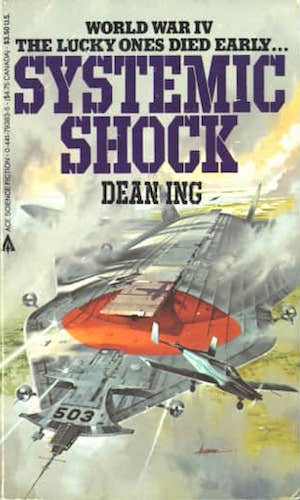
Systemic Shock details a World War Four3 between the United States, Russia, and other nations on one side, and the Islamic nations (which in this setting includes India; have fun discussing that in comments) and China on the other. Orphaned during the first exchange, teenaged Ted Quantrill discovers that he has a remarkable talent for killing—a talent that will make him quite valuable as the war drags on.
Systemic Shock divides its story between a very high-level account of the war and a low-level focus on Quantrill. Ing has a rather sunny view of the capacity of nations to continue functioning even after half the population has died in nuclear fire and plague. Canada is all too vulnerable to atomic inconvenience, despite which Ing’s Canada punches well above its weight in this novel. Indeed, it ends up annexing about a third of the U.S. The book is something of a ludicrous techno-fantasy, but it has its charms.
When the Wind Blows by Raymond Briggs (1982)
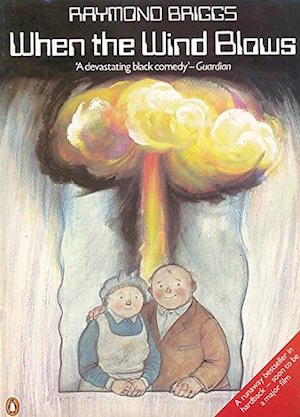
When the Wind Blows features a lovable elderly couple, James and Hilda Bloggs. The Bloggs had a jolly time in World War Two, but their childhood experiences have in no way prepared them for the World War to come. They are among the lucky few who survive the initial blasts but, alas, the United Kingdom is a very small place. And the Bloggs don’t understand that there’s no place to run from fallout.
When the Wind Blows is more proof that the British just don’t know how to enjoy nuclear war. Instead of pleasing explosions seen at a comforting distance, instead we are offered an up-close view of the horrifying deaths of two bewildered pensioners.
Parents of grade-schoolers will be pleased to know When the Wind Blows is available as a graphic novel, an animated film, and best of all, a play suitable for the kiddos to perform.
Threads (1984)
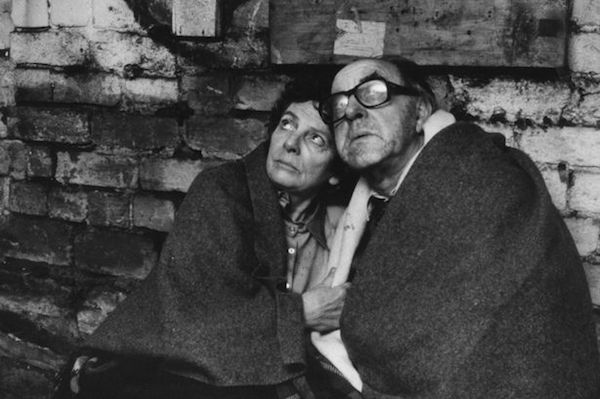
Threads, a film written by Barry Hines and directed by Mick Jackson, shares with Ing’s novel a divided focus. On the one hand, there’s a history of World War Three; on the other hand, there’s a chronicle of how UK citizens (Ruth Beckett, Jimmy Kemp, and the other inhabitants of Sheffield) deal with 210 megatons of destruction.
Hines is a pessimist. Once the bombs begin to fall, it becomes very easy to keep track of the remaining protagonists. Only one character survives the war. Post-war society is reduced to medieval tech levels and must also cope with radiation sickness and a depleted ozone layer.
“The Manhattan Phone Book (Abridged)” by John Varley (1984)
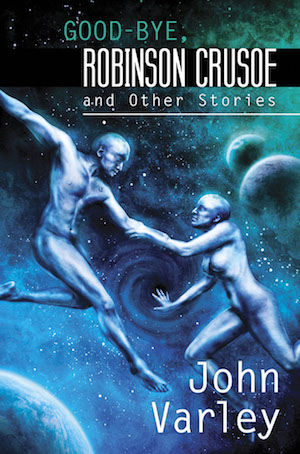
At least the previous book had one long-term survivor. Not so “The Manhattan Phone Book (Abridged)”. Varley recounts the fates of various inhabitants of Manhattan following a nuclear attack. He’s picked the right Manhattan-wide scale to demonstrate how distance from a nuclear strike will affect survivors. Short-term survivors, that is. There are no long-term survivors in this tale.
Varley’s story manages to compress much bitter despair into few words. It can be read here.
Warday by Whitley Strieber and James Kunetka (1984)
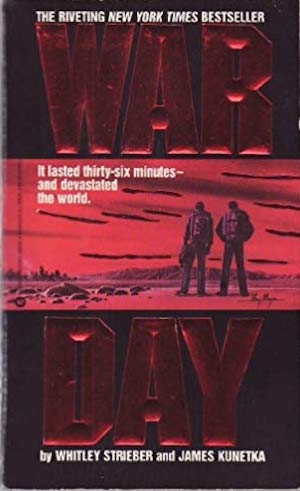
Warday is a far sunnier tale. It tells of a road trip across what remains of America following a limited nuclear war with the Soviet Union. What remains is a broken, balkanized land subject to radioactive dust storms and exploitation by the nations that sat out the exchange. That the United States came out it better than the late Soviet Union is little comfort.
It says a lot that this is one of the happier books on this list: Sure, tens of millions of Americans died, but hundreds of millions didn’t. I imagine the billions of people elsewhere on the planet are also happy to wake up each morning. Not that the characters (fictionalized versions of the authors) really appreciate how lucky they were to be written by themselves rather than John Varley.
Miracle Mile by Steve De Jarnatt (1988)
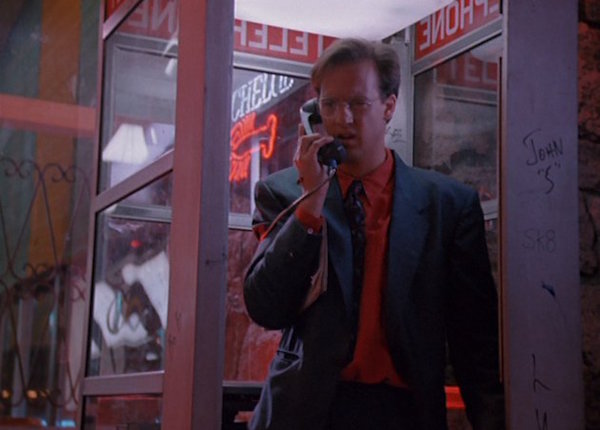
The film Miracle Mile begins with a romantic misstep: lovestruck Harry sleeps through his date with Julie. His attempt to phone her puts him on the receiving end of a panicked wrong number from an American serviceman trying to warn his father that nuclear attack is imminent. With seventy minutes before the first salvo will arrive, Harry has to find Julie, convince her the world is about to end, and secure transport out of doomed Los Angeles.
If there’s anything more romantic than “the threat of war unites two lovers in a romance that will last for the rest of their lives,” I don’t know what it is. This is an ideal first date film.
(Eighties hair warning.)
A Gift Upon the Shore by M. K. Wren (1990)

A Gift Upon the Shore looks at life after pandemic and nuclear war has scoured most advanced civilization from the face of the Earth. Mary and Rachel struggle to gather what books they can find and preserve them for later eras to use. A nearby religious community takes the view that the only book necessary is the Bible; accordingly, the ladies’ library must go.
As World After the Bomb stories go, A Gift Upon the Shore falls somewhere in the middle of the optimism scale. Humanity doesn’t hitch up its collective trousers, dust itself off, and continue with the war as in Systemic Shock, but neither does it face extinction as in On the Beach. No act of god is needed to survive the war, only dumb luck.
* * *
All of these entries are grim reading (or viewing)…some more than others. I am struck by how old most of these works are. We live in a world where nuclear war is always a thinkable option. Surely this has inspired some contemporary authors to write noteworthy books about nuclear war—feel free to provide suggestions in the comments. Until then, keep this homily in mind:
In these times of escalating international tension, always keep your loved ones close. After all, you wouldn’t want strangers to eat their charred remains.
In the words of Wikipedia editor TexasAndroid, prolific book reviewer and perennial Darwin Award nominee James Davis Nicoll is of “questionable notability.” His work has appeared in Publishers Weekly and Romantic Times as well as on his own websites, James Nicoll Reviews and Young People Read Old SFF (where he is assisted by editor Karen Lofstrom and web person Adrienne L. Travis). He is surprisingly flammable.
[1]Nobody not Canadian bothers to specify whether they mean the only London known around the world or the one of which no one save Ted Baxter is cognizant.
[2]“But mightn’t I be mercifully puffed into vapour in an instant too short for the human nervous system to register?” Maybe, but the odds don’t favour such an outcome. The area devastated by a one-megaton airburst would comprise: Fireball, instant death: Call this area X. Buildings crumble, you are crushed and burned: Area 40X. Terrible burns: Area 200X. If you are a casualty, your odds of instant disintegration would be quite poor. If the explosion is a ground strike, producing significant amounts of fallout, the fallout’s footprint would be even larger. Chances are, if you die in a nuclear war, your death will be protracted and unpleasant.
[3]“World War Four? What happened to World War Three?” you ask. Systemic Shock is an example of a small but proud set of books: sequels to other people’s work. Ing’s novel is set after Sir John Hackett’s The Third World War, which was largely non-nuclear and ended with the collapse of the Soviet Union.










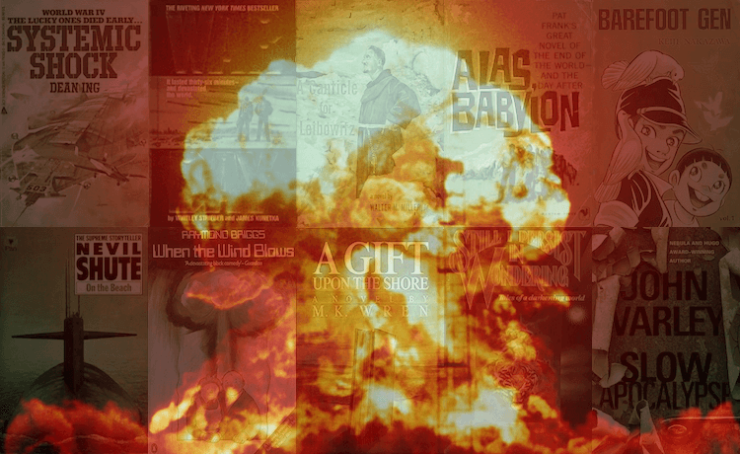
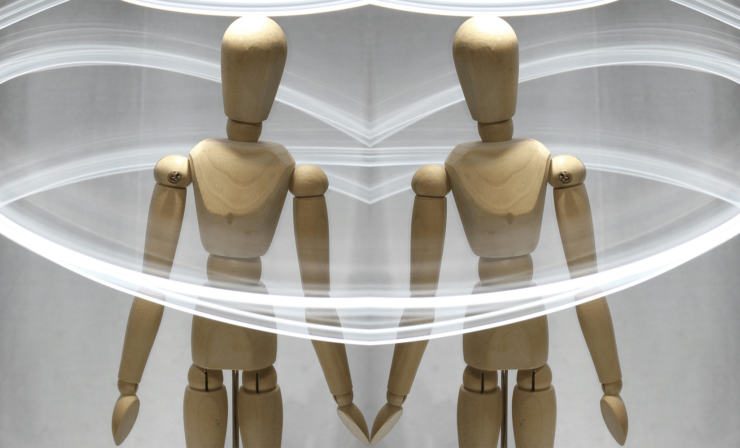



I remember reading Where the Wind Blows when I was a kid in England. Not completely sure why I had it, to be honest, but it packed a surprisingly compelling punch in a few clean but simple pages – and also captured the very British attitude towards a disaster you are powerless to prevent, despite the notoriously quivering stiff upper lip.
There’s also Malevil by Robert Merle. Set in rural France, it’s one of the optimistic(ish) ones where survivors start an agrarian society and the biggest threat turns out to be other survivors.
One of the fun parts about growing up in Canada (once we moved back) was having a teacher give a rather muddled explanation of SAFEGUARD and SENTINEL that basically boiled down to the US detonating nukes over Canada to protect US cities and that we should all expect to die in a futile attempt to protect Americans. That said, homework was still due, which I thought sent a mixed message.
I almost included Malevil, which I reviewed here.
The Varley is one I’ve never forgotten. Another chilling one is “A Gift from the Graylanders” by Michael Bishop.
I grew up in McLean Virginia, and went to high school just down the road from CIA HQ. There were multiple primary targets within a few miles of home. By the time I was 12 we were joking about the uselessness of the warning sirens, which were tested monthly. IIRC, the 2nd Thursday at 10:30 AM. Because of that I had, at one time, an interest in Nuclear Apocalypse fiction and WW3 fiction. I have Hackett’s book in hardcover, there’s also a Clancy-style techno-thriller, “Team Yankee”, about armored combat in that war. Pretty good, actually.
Dean Ing also wrote “Pulling Through” a survivalist novella with a long survivalist guidebook at the end. I heard somewhere that he wrote a sequel, but life is too short to bother looking for it…
“Alas Babylon” was very good for its time, I’ve reread it several times and it hasn’t aged that badly. The author certainly calls out the racism throughout the book. “War Day” was OK, but I never bothered to reread it, though I finished it. I remember checking out “Systemic Shock” from the library, and vaguely recall the plot, and wasn’t there a sequel? Life, again, is too short.
The only post-nuclear-strike non-fiction I’ve read is “Hiroshima” by John Hershey. Definitely worth reading.
“A Canticle For Leibowitz” is one of my favorite books. Have it in paperback and on the Kindle. Just beautifully written. Lots of humor, especially given the subject.
H. Beam Piper’s future history is set in a world where civilization in the northern hemisphere was wiped out in the 30 Minute War which started after the Auburn Bomb, which might not have been a bomb…
When Angels Wept by Eric Swedin was published in 2010. It’s an alternate history where the Cuban Missile Crisis went hot.
So far as I know, it’s his only work of fiction. His day job is a professor of the history of the Cold War – so his vision of WWIII is informed by decades of research on weapons systems, political systems, personalities of those in charge, and so on.
To quote Dr. Strangelove:
I used to be able to read these books/watch these films, and I’ve read/seen about half of them. Then I read When the Wind Blows, and…I just can’t anymore. Something about that book broke me.
For those who do, I recommend (with the usual sort of have-fun-with-your-survival caveats) Michael Armstrong’s Agviq and Brendan DuBois’s Resurrection Day. The first has a scientist who’s up North doing research when the bombs fall, takes shelter in a remote Inuit village, and stays with them as they slowly start taking back their old traditions in the wake of civilization’s failure. The second posts a world where the Missile Crisis did end in a nuclear exchange, and now the US is a struggling second-rate nation in a bad depression, with rumors swirling around that maybe the Kennedys survived…
Where the Wind Blows is horrific anyway, but it gets even worse when you read Briggs’s affectionate tribute to his parents, Ethel and Ernest and realise that he’s basically imagining it happening to his mum and dad.
This is why, when it looks like people will be popping off nukes, I like to get in the van and go camp out near Faslane. I figure that if it happens, I’ll either be shot by the squaddies for being a security threat or vapourised when it is nuked by both America and Russia so that neither side can use it as a staging area against the other after the UK falls (which will happen in minutes). The only thing Trident is useful for is making sure that people who can get to places like Faslane don’t have to survive a nuclear war.
On nuclear war, the scariest story I ever read about it was a Daria fanfic about how a trip to the countryside turned into a harrowing tale of survival whilst Quinn died when the mall she was at was destroyed in the first strike.
Also an RA Salvatore book called “Echoes of the Fourth Magic” which was about how nuclear war gave us all elves and goblins. Yay, nukes.
No “Thunder and Roses” by Sturgeon?
William Barton’s 1996 story “Age of Aquarius” was set in a world where the Cuban Missile Crisis ended in a limited nuclear exchange (but still hot enough to trigger a nuclear winter). This was part of a series of stories where Barton brought a modern perspective to old science fiction tropes and cliches. (“Incredible Shrinking Man”, etc.) If there’s never been a collection of those stories, it’d be a heck of a good project for some small press, or even a big one.
#3 is reminiscent of the Cold War definition of a “tactical nuclear weapon” as “a nuclear weapon that explodes in Germany”.
A number of late Cold War novels had the US and Russia unpleasantly surprised by the revelation that the minor powers had quietly agreed to sit out a general exchange, leaving their imperial masters to burn. How exactly e.g. Poland avoided getting set on fire by the US and the UK by Russia was not clear.
If The Wizards of Armageddon by Fred Kaplan is to be believed, the Americans, at least, didn’t really have a lot of fine control on their war plans. In a hypothetical US/SU war, a neutral China might still be nuked because the US command and control systems did not have the capacity to refrain from zapping everything on The List. Still, eggs and omelets, pencils and erasers.
@13:
Shades of the WWI German deployment plans which led to attacks on the West just to clear the ground for the war in the East.
For a very short story, the song “Breathing” by Kate Bush.
Oh, songs….
99 Luftballoons
We’ll All Go Together When We Go
Strontium 90
Two Suns in the Sunset
The 2020 Commission Report on the North Korean Nuclear Attacks Against the United States: a Speculative Novel by Jeffrey Lewis, based on a nuclear exchange involving North and South Korea, Japan and the US, is a relatively recent one that’s on my reading list. It reviewed out well in some quarters.
Another possible addition is Heinlein’s Farnhams Freehold. It is just set LONG after the nukes went off…
What about Judy Merril’s Shadow on the Hearth, published in 1950?
I got Children of the Dust from my school library as a kid, and it stuck with me long enough that I reread it a few years ago as an adult and still thought it was solid.
I am saving Farnham’s Freehold for the Five Books That Seem Egregiously Racist at First Glance That Turn Out To Be Pretty Much Just as Bad as They Appeared; or Five Authors Who Embraced George Fitzhugh’s Cannibals All! as a Guide article.
Testament was a movie I saw on PBS before I saw Threads. It’s another story where the bombs go off somewhere else, but nobody is safe. It’s heartbreaking.
I think it was TBS that showed Threads back in the days before ubiquitous cable. I stayed up watching it, unable to look away, and was absolutely shattered by it. In a brilliant move, and the best unicorn chaser I have any personal knowledge of, they scheduled James Stewart’s Harvey to air immediately after it. It really helped.
The last episode of the 4th.season of Babylon 5 has a segment that has a lot of “A Canticle for Leibowitz” A nucler war that devastated the world and a priest who try to salvage what remains of the civilization.
The debut screening of My Neighbor Totoro was a double feature with Grave of the Fireflies. I have always wondered in which order they were shown.
I’d like to recommend the novella Fade to White by Catherynne M. Valente, included in her collection The Bread We Eat in Dreams. It’s something like an alternate history gender dystopia, set in a U.S. that lost (or, more accurately, is still losing) World War II. Large parts of the country have been nuked. Joseph McCarthy is President with Ray Kroc as VP. In order to keep the population numbers up, there’s an institutionalized forced-marriage system, although one that’s very different from what you’d maybe expect. (Hint: dads are encouraged to register for Father’s Day presents to avoid getting duplicate gifts.)
I remember asking for an aircraft identification guide book for my birthday when I was around 11; I didn’t tell my parents it was because I was worried about the Russian bombers.
One of my favorite post-apocalyptic books is Hiero’s Journey by Sterling Lanier. A good adventure book, if you were able to overlook depressing things like the death of most of humanity.
I have read two of these, _Alas, Babylon_ and _A Canticle for Leibowitz_, both excellent books. The book picture for the John Varley short story is just wrong since that book is about a worldwide crude oil apocalypse.
Two books are missing from the list. One is incredibly important about surviving a nuclear bomb exchange. _The Road_ is a Pulitzer Prize winning horrible look at the next generation survival and what it takes for the current generation to make it so.
https://www.amazon.com/Road-Cormac-McCarthy/dp/0307387895/
The other is a self published young adult series of a family who makes it into a nuclear bomb shelter built by the military to house a couple of battalions. No one else makes it.
https://www.amazon.com/Snow-Ash-Endless-Winter-Novel/dp/0988003023/
I remember watching The Day After (the US broadcast television equivalent of Threads) back when it aired in the 1980s. I watched it again and my god, was it depressing.
Another post-apocalyptic series that I remember fondly from my youth, but which would go onto the list mentioned in #21 above (or a similar list): Robert Adams’ Horseclans books. They’re all conveniently available on Kindle these days (with really, really dreadful beefcake romance novel covers) but I’m kind of scared to pick them up.
Post-apocalyptic was also a theme in 1980s RPGs — on the one hand, you had TSR’s Gamma World, which was a kind of cartoonish Thundarr sort of post-apocalypse with mutants and wizards, but on the other hand you had GDW’s Twilight: 2000, which always struck me as kind of depressingly plausible — nobody ever just pressed the big, red button, but the US & Soviets got into it conventionally in Europe, then the tactical nukes started flying, then one thing led to another, and …
They haven’t aged well, he said diplomatically.
There’s also Paul O Williams’ Pelbar cycle, which has the nice feature of being a post apocalyptic series mostly favouring cooperation and reconciliation over cannibalism and anarchy.
You say “Miller wrote other stories during the 1950s, but they have been largely forgotten, overshadowed by this grim work.”
‘The Big Hunger’ is a short story, if you can call it a story, that is rather compelling.
@29 — To be fair, I’m pretty sure they were actually kind of terrible even back in the 1980s.
@30 — That’s a series that I always remember seeing, but which I never quite got around to picking up.
If you want a more balanced/optimistic view on a US-Russia nuclear exchange, how about ‘The Door Into Summer’ by Robert Heinlein?
Of course, there is the five star young adult story about surviving a nuclear war that was not a nuclear war, _Emergence_ by David R. Palmer:
https://www.amazon.com/Emergence-David-R-Palmer-ebook/dp/B07F2SG4TG/
I’m stunned that The Day After was not on this list. IIRC, they made us watch it in school and had discussions afterwards.
https://www.imdb.com/title/tt0085404/
For long-after-the-war post-apocalyptic stories, I strongly recommend John Wyndham’s Re-Birth and H. M. Hoover’s Children of Morrow and Treasures of Morrow – the latter are kids’ books, but well written and engrossing. They share many similar themes. I can’t recall whether the latter definitely specified that nuclear war was involved in the near-total collapse of the biosphere; the brutally oppressive low-tech survivor culture lives around an old missile silo and worships the defunct warhead.
Since we’re plugging music, I’ll throw in “Survivor’s Song”, by Julia Ecklar.
And what the hell, why not Beneath the Planet of the Apes.
We watched The Day After and discussed it in class; we did the same with a reading of Alas Babylon. I asked my parents about the Cuban Missile Crisis and I vividly remember them telling me that they were really, truly terrified that it would turn hot. We also sat through dozens of civil defense drills (seems like a joke now; would I want to survive a nuclear strike only to die an agonizing death from radiation poisoning?).
On The War Game: One way the filmmakers worked around their small budget was to use newsreel footage of the aftermath of incendiary bombings in World War II, which was well within living memory at the time. It was a good way to make the point that most civil defense planning, which was based on the idea that nuclear weapons would mostly just knock a bunch of stuff down, was ridiculously inadequate. As we watch cities engulfed in firestorms, the narrator basically says “These images are actually from conventional weapons in the last war. Nuclear weapons would of course be much worse.”
On Warday: I realize you were being tongue-in-cheek when you described this as a relatively cheery book, but it’s worth mentioning that the co-narrator who represents Whitley Strieber finds out very early on that although he survived the bombing of New York, he has received a total amount of radiation that will inevitably be fatal in the near future, and he’s therefore not allowed to receive medical care ever again due to triage laws.
John Varley’s The Manhattan Phone Book (Abridged) might be the most honest story about nuclear war ever. Make yourself a favor and read it. It is a very short story.
It was published within the collection Blue Champagne. All great stories, including the one that gives its name to the collection.
Does “Walk to the End of the World” by Suzy McKee Charnas qualify for the “(a long time) after the bomb” list? As well as James’ “every nuclear holocaust aftermath is better with cannibalism” list and maybe a hypothetical “every nuclear holocaust aftermath is better with cannibalistic misogynists” list as well?
I remember being sick one day back a few decades ago and watching the movies Fail Safe and Doctor Strangelove back to back. One of the most depressing days of my life…
I read When The Wind Blows only once, standing up in a bookshop, and I kept walking away from it and picking up other books and going back and finally finishing it (I read fast) and finding it so utterly unbearable I have never read it again. It’s actually worse if you have familiarity with Raymond Briggs’ other works, especially the memoir he drew of his parents’ life together, because the pensioner couple who die so horribly are so clearly based on them. I find it literally unbearable and can’t imagine re-reading it, ever.
For bearable books about post-holocaust life, I don’t think anyone’s yet mentioned the 1984 YA novel Brother in the Land by Robert E. Swindells: he mentions in the afterword that one reason for writing it was that he felt there should be a book for teenagers written after a nuclear war which made very clear that most people were going to die and life was going to be horrible for the survivors.
Isn’t the nature of the disaster in The Road kept ambiguous?
One that hasn’t been mentioned yet is Resurrection Day by Brendan DuBois. It’s an alternate history set ten years after the Cuban Missile Crisis where the US only lost a few cities but quickly became governed by a hidden military dictatorship. The main plot is a rather good murder mystery.
Kim Stanley Robinson’s early novel The Wild Shore is (as far as I know) unique in that it depicts a world where only the U.S. was bombed, and only to the minimum extent necessary to destroy it as a political and industrial force, so that the primitive but not terrible conditions the survivors are living in are more or less plausible. The rest of the world is going on basically unchanged while keeping the former U.S. under an embargo.
The fewer people who have them, the less likely anyone is to fire one or ten thousand off. It is essentially the logic of gun control. ICBM control, if you like.
I must have missed the point at which the British government requested the Russians point a few hundred intermediate range nuclear missiles at the UK, and fire them off.
William R. Forstchen’s One Second After (and its sequels) is a modern take on the idea of surviving in a post nuclear world. It focuses on changes caused by a high altitude nuclear EMP, rather than details of fallout and firestorms as most of the stories from earlier decades do. I highly recommend it as one of those contemporary titles you mention.
ad@47: I believe the author was referring to the BBC (authority figures) declining to show the movie (artifact which they requested).
As for large versus small nations, there is a strong argument for large nations being more stable holders of nuclear weapons (and other weapons of mass destruction). Large nations are able to keep larger arsenals and disperse them more widely than small nations. This makes them a much harder target for a successful first strike. Smaller nations with small, easily knocked-out arsenals make easier targets. Smaller nations are thought to be more likely to make a first strike for that reason.
All true, and analogous results can be seen in other arms races in history, but so far, only one large nation has used a bomb.
When it comes to post apocalyptic nuclear war stories, I always fall back to the young adult book I read in middle school,_Z is for Zachariah_. It’s not in any way realistic, aside from the notion that survivors can be more deadly and antagonistic that atomic weapons. There is, however, something both uplifting, and yet at the same time utterly nihilistic about the tenacity of the young female protagonist’s belief and hope, and how it both drives her and terrifies her.
Also, thanks for including Miracle Mile. I caught it on HBO late one night as a young teenager, and it stuck with me. Years later, I had forgotten all but the most basic parts of the story, including the title, and when it came on TV, I was thrilled to find it was just as accessible to my suspension of disbelief, and realized it might have contributed significantly to my morbid “hero fantasy” imagination. And yes, an official 80’s hair warning is necessary. Can’t have you hoping any of those teased and sprayed bangs would not IMMEDIATELY cause a conflagration that would rival a thermonuclear holocaust
“I am struck by how old most of these works are. We live in a world where nuclear war is always a thinkable option. Surely this has inspired some contemporary authors to write noteworthy books about nuclear war…”
I judge this reason this is true is that other apocalypses seem more likely. These days they tend to be environmental; although even that’s not new. John Brunner got there already.
Q How about Down to a Sunless Sea, b y David Graham? A planeful of people is flying across the Atlantic when the bombs drop. They wind up in Antarctica. I think the bombs may have tilted the Earth’s access by the end, allowing a happily ever after.
@6,
Is that the Dean Ing where the protagonist has a pet cheetah?
Growing up in the 80s meant that there was a seeming unending stream of post-nuclear war YA fiction, most of which was pretty forgettable. But probably my favorite was Pamela F. Service’s Winter of Magic’s Return (the beginning of the New Magic trilogy), possibly because it’s such a weird mix of genres and yet still works. It’s about friendship between three unpopular kids at an exclusive boarding school in Wales, but it takes place 500 years after Britain was mostly spared by the bombs but still got plunged into nuclear winter. Eventually the amnesiac, unusually pale skinned, scholarship kid turns out to be a de-aged Merlin, and after an incident with a mutant he gets his memory back and they go on a quest to bring back King Arthur.
Wasn’t that a couple of thousand nukes on a couple of thousand targets?
@55: Yeah, a few thousand, but based on their effects as described, not H-bombs, though, so restraint! I no longer recall how the rest of the world avoided the SLBMs that the US would have used in response.
Here’s a very detailed look at the aftermath of a Cuban crisis gone hot https://www.alternatehistory.com/forum/threads/the-cuban-missile-war-timeline.65071/ by the way. Upshot – US and Canada heavily damaged, but with governmental institutions carrying on, China dealing primarily with worldwide climate effects (not good), and poised for great post-war influence, Europe and Soviet Union, devastated.
Let’s not forget The Texas-Israeli War.
Another song!
Political Science by Randy Newman.
(‘Let’s drop the big one and see what happens’)
PamAdams@53, 57
Yeah, that’s the one. And the sort of flying car.
The Texas-Israeli War. I had forgotten that one. Probably for good reason.
I saw the War Game at university in the late 1970s – it wasn’t shown on UK TV by the BBC until 1985.
I remember someone from the ‘Federation of Conservative Students’ stood up at the end and said he’d rather have that happen to all his family than have one ‘red’ set foot in the UK.
The nuclear bunkers of the Thatcher/Reagan years are now museums in the UK. You can visit the one in Nantwich Cheshire and still see on the whiteboards the results of the last exercise held there. The lethal radiation dose line clearly shows as covering the whole city of Manchester
Children of the Dust had me absolutely terrified as as child, too. Even though I was living in Dublin, in a neutral country and probably rather far from any expected targets, the whole first section in the house was so incredibly realistic- you could easily imagine taping up the doors and windows in a desperate attempt to keep out the fallout, and leaving the family dog outside so you wouldn’t have to feed him.
I read it again a few years ago as well, and it really did stand up as gripping and well-written
Ah, the Day After. I agree it should have been on this list. I had my own personal connection to it. I was spending a college semester abroad in West Germany, came home for my older brother’s wedding in November 1983, and got to watch this live with a large viewing audience in the U.S. (Turns out Der Tag Denach was watched by my fellow Americans and German friends back in my dorm and around the country.) Movie was shocking and I’m not surprised that others have reported it was either mandatory watching or taught in schools immediately thereafter. Movie had potentially an even larger impact on Western Europe, as President Reagan was in an activist mode and had placed potentially offensive Pershing II and cruise missiles on U.S. bases in West Germany, triggering massive protests throughout the country – better known as the Hot Autumn (“Heisse Herbst”). Adding that movie on top of the real life perceived threats raised temperatures throughout W. Germany and other nearby countries.
The Wrong Sun in Douglas Coupland’s Life After God is absolutely fantastic and deserves to be better known than it is:
https://www.amazon.co.uk/dp/B00AHEKMBQ/ref=dp-kindle-redirect?_encoding=UTF8&btkr=1
It hits on the problem with stories about nuclear war: the horror of the concept isn’t always about its aftermath but about its possibility, and for lots of people the aftermath is just “you are dead.” So The Wrong Sun is written from the perspective of people who suddenly died on a perfectly ordinary day, and who are narrating their experiences from somewhere else.
One of the many dangers of nuclear war is that experiencing it is not narrative: it’s an abrupt ending that comes from nowhere, as Derrida apparently wrote in an essay I didn’t understand. It doesn’t stick easily into the form of a story and so there are not so many stories about it, but that in itself probably increases the risk it’ll actually happen. It’s kind of bleakly appropriate if our story-telling species is destroyed by something it’s very hard to tell a good story about. and The Wrong Sun was really the work that hammered that home for me.
Try “The World After’ by DL Gore. Nobody seems to have heard of it.
It’s reminiscent of John Christopher’s so called ‘cosy catastrophe’ novels, with a twist.
James,
You twice refer to the UK as a small country. You must be from the second-largest nation on Earth or something. It’s above median size.
I remember Farnham’s Freehold as acknowledging the existence of racism more than being racist.
@65
Farnham’s Freehold was about racism. It was trying to be a commentary, saying “See how idiotic it looks when the shoe’s on the other foot?” But it failed pretty badly. The “Cannibalistic Negro” is a long standing racist trope.
I grew up not that far from Cheltenham in the UK, which is the home of GCHQ, which is the UK’s version of the NSA. There’s a couple of hills between my folks house, and GCHQ. Probably just enough that we wouldn’t die quickly in the shockwave, but we would be right in the fallout plume. Basically if nuclear war broke out (or breaks out, I suppose), my family home was in pretty much the worst possible place. As a kid I only was only slightly aware of this, but I was somewhat aware of The Bomb as it was known.
One thing no one has mentioned about Raymond Briggs yet is that he was primarily a children’s author. He’s probably most well known for The Snowman, and Father Christmas books. His graphic novels were a staple of our local library, and Where the Wind Blows was published in the same sized book, and looked from the cover to be very much like his other children’s books.
This is why I doubt I was the only kid who picked it up off the shelf and read about my family’s likely chances in the event of war, when I was probably too young to really deal with it (maybe 7-8?). I’ve read it since, quickly, trying not to take it in too much. But it’s too late of course, I’ve lived the rest of my life with a visceral dread of nuclear war.
@65 I’m from Scotland, and yeah, the UK is a pretty small nation. In more ways than one, and we should accept it too. We’d be happier and spend less money on pointless nuclear weapons if we did.
When I was young, I read the Reader’s Digest condensed edition of Philip Wylie’s “Tomorrow!” which looks at the effect of nuclear war on twin cities, one of which takes its civil defense preparations seriously, and one of which does not.
I thought that the reason there was so much fallout in On the Beach was because the powers in the northern hemisphere who had their nuclear exchange used cobalt weapons, which give off a ton more radiation than ‘conventional’ nuclear weapons. Used as a kind of a ‘poison the well’ kind of spoilsport that caused the enormous amount of radiation seen in the novel.
Most depressing list ever. I’ve read several of these books, and seen some of “The Day After,” which depressed me even more when I saw that one of the children had sheets on his bed similar to ones I had as a kid. I had to stop watching after that. I have to ask about the Ted Baxter reference–are you referring to the American sitcom character? Or someone else I should know about?
The TV Ted Baxter, who got into unspecified trouble early in an episode, and then loudly declaimed at the end “WHO EVER HEARD OF LONDON, ONTARIO?” Viewers in Canada chortled but probably very few people outside the Dominion. Specifying that the London one means is the one in England is a bit of a tell that the speaker is Canadian or at least suspiciously familiar with Canada.
Oddly, we don’t do that with Waterloo, Belgium. Or most of the other place names we lifted, Canadians as a nation being unclear on the utility of unique place names (which is why until the Post Office stepped in, there were at least four communities using the name Niagara in a comparatively small part of the same province.).
If I ever write a Foundation tie-in novel, I am going to have a character who keeps specifying “Trantor, Trantor,” out of fear people might get it confused with “Trantor, Nephelos,” which nobody not from Nephelos has ever heard of.
@73: Feel bad for Newark, Delaware, which is only 120 miles from Newark, New Jersey, the Newark that people have heard of (the one that might be the real-world equivalent of Gotham).
As I recall, the community now known as Niagara on the Lake used to be called Newark before they realized being one of the four Niagaras would be even more confusing.
@65 If memory serves, back in the 1950s some kind person calculated that five or ten megaton-range detonations on the East Coast of the UK would be enough to drape the entire country in a lethal dose of fallout. So from the viewpoint of someone contemplating nuclear war, the UK is indeed a small country.
These days all one needs to is fire up Nukemap, and play with yields and wind direction.
I spent a lot of years working in Newark, NJ. Yeah, it’s one green-haired maniac away from being Gotham. But it also has the best Portuguese food anywhere!
Another song! “It’s a Mistake” by Men at Work
Ah, the 1980s, when we wrote jaunty pop songs about mutually assured destruction.
Growing up in a US Air Force family in the 50’s and 60’s, I don’t think I ever lived further than a dozen miles from a probable target – and for about 5 years of that time it was target #1 (Washington DC) or target #2 (Offutt AF base, Strategic Air Command headquarters). By the time I started high school I’d read every book about a nuclear war I could get my hands on.
One you missed is “Triumph” by Philip Wylie, where by the end of the book only 4 people in North America survive. A little different outcome from the previously mentioned “Tomorrow”.
I joined the Army as a tanker, requesting assignment in Germany, in 1982. Reagan was president and I expected him to start WWIII either by accident or deliberately before I’d be out. I grew up downwind of the missile silos of the Dakotas so I was dead either in or out of the military. At least in a tank I’d die quickly and have a nice 60 ton steel tomb with my crew mates; much better than dying slowly from the fallout induced radiation sickness I’d have had back home.
In the end, “The Day After” put the fear of God into Ronnie & then at the Reykjavík Summit Gorbachev played Reagan like a fiddle and got the world the INF treaty that made Europe safe from the Pershings and GLCM’s. Now I wonder where my old coffin ended up. I may yet want it…
@77 In the 1970’s the government published “The Effects of Nuclear Weapons” that gave away lots of tidbits about nukes as well as what they’d do. That website is based on the hand calculator that came with the book IIRC. I used it to know how totally dead my family in Wisconsin (and everyone in MN between us and the silos) would be when the silos in the Dakotas where hit.
I’m surprised that Konstantin Lopushansky’s 1986 film Dead Man’s Letters hasn’t been mentioned yet. It’s a very quiet, very depressing film about a group of survivors living in bunkers and dying of radiation sickness. In the final scene, after the main character’s death, a small group of children leaves the bunker and wanders through the destroyed world in protective clothing, hoping to find a place not touched by the war.
@20: I recently reread Children of the Dust and also thought it stood up well.
@34: Oh thank you so much to the link to a copy of Emergence, and a Kindle copy at that. A friend lent me her paper copyany years ago, but I never found another copy locally. I’ve now bought it on the spot.
@54: I will always have a soft spot in my heary for Winter of Magic’s Return. My copies of the original 2 books have survived many book culls over the years.
The Effects of Nuclear Weapons is older than that: my edition is 1962.
@43, first paragraph, re reading When the Wind Blows in a bookshop, et al. Me too, exactly. I wonder if this is a common experience.
Another candidate for the list mentioned in #21 (and it does have a limited nuclear exchange at one point, so maybe it counts for this article?): Niven & Pournelle’s Lucifer’s Hammer.
@87- shudder. That’s a sick little book that has really aged badly – and considering it was bad to begin with, that’s saying something. The racism and hate that drips off those pages isn’t as surprising, though, when you remember the promotion of the use of Chemical WMD’s as a good neighbor policy. All of Heinlein’s flaws but none of his virtues. Hopefully all his books will be forgotten quickly.
I was six years old during the Cuban Missile Crisis and I can remember feeling a sense of total terror that was not at all helped by the adults trying to tell me that “everything was ok” when it so clearly was not. For years after that I would sometimes dream of the nukes going off. What a world.
#80 – Ten years between books by Philip Wylie with quite different results following the use of atomic weapons. Another once popular, touted as message and not genre was Level 7
Often seen on student’s bookshelves and well reviewed in Galaxy at the time.
We read Z for Zechariah in middle school, which was a pretty chilling story (young teen girl in her family’s homestead is the only survivor, until one adult male scientist in a survival suit stumbles on to the enclave and…it goes about as well as you can expect).
@16, if you want songs, don’t forget Christmas at Ground Zero (Ground Zero being the pre 9/11 use of the term).
I’m old enough to remember the circles centered on the Soviet missile sites, showing where those IRBMs would land I was a ten-year old growing up inside of one of those range circles. My hometown had a major plant for Pratt & Whitney; the towns next door were major manufacturing centers. Within 50 miles were a manufacturer of fuzes, two of helicopters, two for aircraft engines, one for bearings, two for aircraft accessories, major naval base, and the Coast Guard Academy
I wasn’t entirely sure I’d make 11
While making for good post apocalyptic stories, the nuclear threat must be one of the most overexploited threats to humanity in the litterature. There is no way that even a total nuclear war could lead to the world wide eradication of human life that is so often described in popular culture. The nuclear winter is something that could lead to a collapse of societies on a large scale, but the radiation will in general have very little impact beyond limited areas.
@93/Robert Mårtensson: Wouldn’t the nuclear winter kill all the plants and thus cause a mass extinction?
@93 Modern human life depends on such a huge interconnectedness of systems that even a relative small scale social collapse could start the extinction dominoes falling.
The idea that a nuclear conflict could in some way be survivable is a particularly poisonous one, beloved of certain extremist firearms groups and similar extremist groups. Sadly this now appears to include senior members of the US Government. It will not be survivable, though, and should not be promoted as such. Nobody is going to come out of it as a swaggering badass whose time it is to shine.
@95 random22
“Nobody is going to come out of it as a swaggering badass whose time it is to shine.”
You forget the cockroaches.
That is a myth about the cockroaches, they are only slightly more radiation tolerant than human beings. It comes about from survivors of the Hiroshima and Nagasaki seeing lots of cockroaches (forced into the open from the destroyed buildings) crawling around in the wreckage. This, and the general crawlyness of cockroaches in tenement slums of Western cities, was cooked up into a schlock horror B-movie myth in the 1950s and 60s, and then gleefully reported by tabloids as an easy story, but sadly it is all untrue. In a nuclear exchange cockroaches would be just as screwed as the rest of the animal kingdom.
If by slightly, you mean six to fifteen times more tolerant.
Deinococcus radiodurans, on the other hand… ;)
Not to mention Cladosporium sphaerospermum, Wangiella dermatitidis, and Cryptococcus neoformans…
While the nuclear war episode of Cosmos and The Day After really set my horror of nuclear war to 11, the first encounter I had was the start of Star Blazers. The entire Earth has been bombarded with radioactive comets, the last few survivors are dug in under the former ocean beds, and tunnel UP into the wreck of the Yamato to build a starship. And along the journey, radiation sickness still kills… well. Watch the show. This was children’s television.
Andre Norton’s Star-Man’s Son has a pretty nice environment for post-nuclear war.
So many of these ring true from my teenage years, it’s kind of scary, but The Day After, On the Beach, Alas Babylon and Canticle for Leibowitz I still remember vividly.
I would add to the list ‘A Boy and His Dog’ – both the story and the movie. On the RPG front, Aftermath from FGU, was a great example of allowing you to both pick your apocalypse and how long after it happened the game was set. Good times!
For complete shlock, you could also include the ‘Survivalist’ series by Jerry Ahern, but you should be careful, lest you draw the attention of modern-day preppers and militiamen.
Noticed that Nicholas Meyer’s The Day After was mentioned by a couple of folks. I took the Civil Defense Shelter Manager course out of sheer boredom in eighth grade, followed it up with the Louisiana Dept. of Emergency Preparedness’ certification as a Radiological Monitor in third year of college, after taking a university course taught from Chase and Rabinowitz’s Principles of Radioisotope Methodology.
The following year I found a first edition of Herman Kahn’s On Thermonuclear War, which I found refreshingly free of pearl-clutching about ‘the end of the world’. I’ve kept up my reading with things like Brian Martin’s article “The Global Health Effects of Nuclear War”, a very good read if you are curious about how nuclear fallout works, and Glasstone and Dolan’s definitive The Effects of Nuclear Weapons (I own the 1978 edition).
All that is not intended to impress you with anything but that I have some working knowledge of what to expect after a modest nuclear exchange (in which neither the US nor Russia told overly big lies about reducing the size of their deployed nuclear arsenal while the START treaty was in effect).
The Day After is some of the more conscientious anti-nuclear propaganda ever written or filmed (along with Threads). The plot of The Day After takes no noticeable liberties with known facts about nuclear weapons effects, or known/predictable fallout effects of large-scale thermonuclear bombardment. In fact, assuming some of the Soviet weapons must have been ground bursts to try and dig US ICBMs out of their silos. I found The Day After slightly optimistic.
This was disorienting to me, after I’d read that Nicholas Meyer’s object in producing The Day After was to destroy Ronald Reagan’s chances for re-election in 1984. But it gave me some respect for Meyer, that he was willing to bet that an honest documentary on the aftermath of a thermonuclear war would be enough to influence voters (four years after many of us were afraid of a nuclear war being triggered by Soviet adventurism intended to fill a global power vacuum) that we’d made a mistake.
Meyer, as far as I can tell, played fair with his audience. If there was pathos, it was the honest pathos one would expect after terrible things happen to real people. Serendipitously, while he didn’t manage to prevent Reagan’s second term, he did manage to change Reagan’s mind about nuclear war enough to drive him to the summit table with Gorbachev. The Day After was worth making, if only for that.
I am convinced a thermonuclear war would be the most horrible thing that could happen, short of a highly-communicable droplet-transmissible virus as virulent as HIV or Ebola going on a burn through the people of the world.
I am also convinced most people on Earth could survive a thermonuclear war if they took the precautions the Swiss, Swedish and Chinese took to protect their people (in China’s case, I’m thinking about their use of a serendipitous natural cave system under Beijing to provide shelter space for 10 million people).
We have an odd national negotiating process in the United States. Through our representatives in Congress, we will accept expert advice that building and outfitting survivable shelter space is too expensive and too “destablilizing” to consider. Congress will then authorize a new and vastly more expensive fleet of nuclear missiles, stealth bombers and ballistic missile submarines to be built every twenty years or so – and we’ll vote those guys right back into office. The 2018 Nuclear Posture Review describes just such a process (in fairness to its authors, the procurement of those items follows decades of neglect of facilities we need to convince other countries that our thermonuclear weapons will work, thus deterring them).
Fallout and blast shelters are not destabilizing. Their objective is to reduce the deaths following a nuclear attack. In so doing, they reduce the incentive for a nuclear attack. The more people survive a nuclear attack, and the more tools and supplies and food are set aside for them in safe places, the more likely it is that those survivors will restore their nation to a semblance of what it was before they were attacked after a decade or so, and that the attacker will, at some point, be made to pay for the attack.
Given the destruction thermonuclear weapons can cause, mitigating their effects and the toll they can take in human lives is the very most stabilizing thing we can do. It makes using those weapons a very dumb idea.
I’ve toyed with the idea of writing a short course on surviving a nuclear war. The first thing, of course, is to convince those taking the course why we ought to try and survive such a war, and that it can be done.
After I’d done that, I’d show them The Day After and Tremors, to show them what a serious and undesirable thing not preparing properly for a nuclear war is. I might motivate them to think and prepare. I might just scare them into a profound despair. I haven’t decided which is more likely.
Songs: Steely Dan, as usual, did it best: King of the World.
“Its a Mistake,” Men at Work.
Books, short stories: “Jody, after the War.” By Ed Bryant.
“A Boy and His Dog,” Harlan Ellison, and, “I have no mouth, and I must scream.”
Somebody help me. A novel, probably written in the late ’60s. The cover is red with a picture of a boy in the foreground and ruins of a city nuked in the background. The main part of the story; besides survival is that a man comes along and says everyone would be better off if he could get the the Smifferson, which turns out to be The Smithsonian Institute. I know I really enjoyed it and would like to read it again, but I can not remember the title. It might have had something to do with mutants.
Somewhere in A Canticle for Leibowitz, a monk carefully copied a blueprint. Filling in the background with blue ink. Leaving the lines and letters in white. It was far more work than the obvious practice of leaving the field white and making the lines blue. But the amanuensis knew St. Leibowitz must have had a holy purpose in making plans in such a strange way.
I remember those blue prints. The “holy purpose” was technological. Plans started with the engineers or architects making black-on-white drawing and specifications. The cheapest method of reproducing them made white lines on a blue field. They weren’t as easy to read as black on white. But you got used to them.
Eventually someone developed a reproducing process that left the field white and the lines dark. They were still called blue prints. We still called them the funny papers.
More post-Apocalypse songs:
Wooden Ships by Crosby, Stills and Nash
Montblanc, by Quiet Hollers
Distant Early Warning” By Rush
Forever Young by Alphaville
Hammer to Fall by Queen
Red Skies by The Fixx
Two Tribes by Frankie Goes to Hollywood
Silent Running by Mike and the Mechanics
Gonna Put My Face On A Nuclear Bomb by Mojo Nixon
There was a book in the 1980’s that I read (later elementary school age, 3rd-5th’ish) about a boy who lived underground due to a nuclear war and then one day he came out of their shelter…maybe close to or on a beach/shore…Anyone remember this??
@102 I am convinced a thermonuclear war would be the most horrible thing that could happen, short of a highly-communicable droplet-transmissible virus as virulent as HIV or Ebola going on a burn through the people of the world.
You mean like Covid? I remember wondering to myself in the spring of 2020 whether it would be preferable to have a nuclear disaster or a global pandemic. At least with a nuclear disaster you wouldn’t have to be afraid of accidentally infecting and killing your family. (As long as you decontaminated after going into a fallout zone.)
In the end, Covid, while awful, doesn’t have the mortality rate of Ebola. But if it did, I’m still not sure which way I would decide.
Yes, actually. In a world where a zoonatic outbreak is 8-10 hours by air from every city in the world, COVID could have been much much worse, absent the public health measures that have been taken. As it is, more than 5 million deaths so far:
https://coronavirus.jhu.edu/map.html
The estimate for the 1918-19 pandemic is 50 million
https://www.cdc.gov/flu/pandemic-resources/1918-pandemic-h1n1.html
Not really something anyone who lived through it presumably would accept as something to repeat.
Sort of like war – amazing how lightly those who have not experienced it can take it.
And as has been said:
“…any mans death diminishes me,
because I am involved in Mankinde;
And therefore never send to know for whom
the bell tolls; It tolls for thee.”